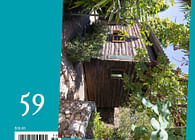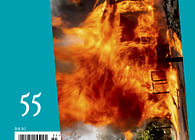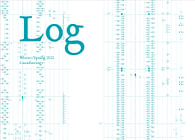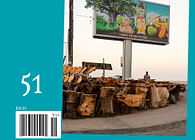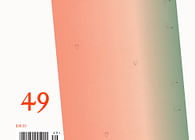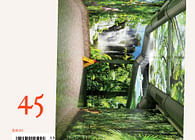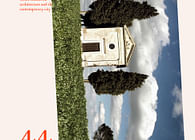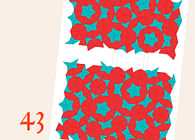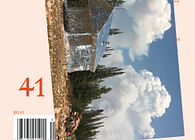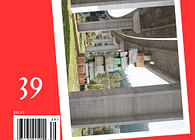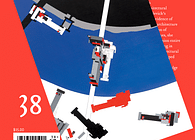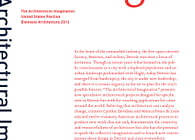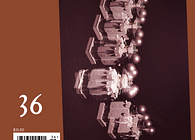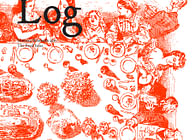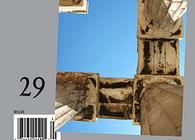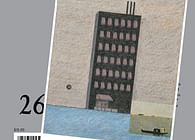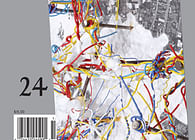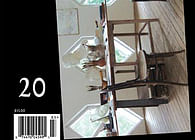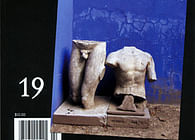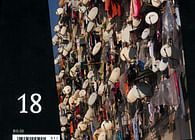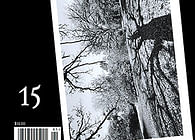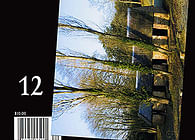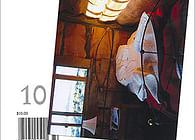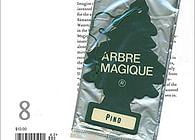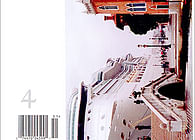
New York City
“Calls for more Blackness in architecture schools can be simplistic,” writes architect Darell Wayne Fields, guest editor of Log 57. Well-meaning equity and inclusion programs often simply “associate the mere presence of Black bodies with institutional change.” In Log 57, a 208-page thematic issue titled Black is . . . an’ Black ain’t . . ., 29 authors explore the complexities of Blackness as it relates to aesthetics and architectural pedagogy. As Fields notes, “In calling for more Blackness, I, for one, am calling for more Black methodology. An inherent characteristic of [which] is a measurement of difference.”
To that end, Log 57 gathers essays and reflections on architectural pedagogies, both in academia and in practice, by Sean Canty, Michelle JaJa Chang, Ajay Manthripragada, and Mónica Ponce de León, among others. Projects by young designers for whom methodological concepts of Black Signification and bricolage are central are presented in a four-color section, and built works and a preservation effort channel difference as a generative force in real-world communities. “This work demonstrates what is possible when methodological change is real,” writes Fields. “Real change, like Blackness, makes us nervous. Black difference, however, is revolutionary.”
Status: Built
Location: Everywhere
Firm Role: Publisher
Additional Credits: Chelsea Jno Baptiste, Savannah Cheung & Sahil Mohan, “VERSatile Method”
Tamara Birghoffer, “House for a House”
Kenneth Brabham Jr., “A Room for Jacob Lawrence”
Alex Cabana, “Fuller’s Spine”
Barrington Calvert, “Speakeasy for the Revolution”
Barrington Calvert & Nick Meehan, “Preservation Operations: A Guided Tour of American Legion Post 218”
Sean Canty, “All the Things You Are: Latency as an Aesthetic Practice”
Brian Cavanaugh & Darell Wayne Fields, “University of Oregon Black Cultural Center”
Michelle JaJa Chang, “Shadows and Other Things”
Eunice Chung, “Bigness and Blackness”
Matt Conway, “Drunk Datums”
Melinda Denn, “A House for Rosie Lee Tompkins”
Nitzan Farfel, “A House Is a Brothel”
Darell Wayne Fields, “Prologue to a Black Pedagogy”
Rachel Ghindea, “House for the Dead”
Mitzy González, “Nepantla: An Altar for Gloria E. Anzaldúa”
Bernardo Guerra Jr., “Asylum–Proximity”
Kaleb Houston & Hannah Terry, “Black Architecture 101”
Reese Lewis, “The Speculative Devaluation of 270 Park Avenue”
Ajay Manthripragada, “A Double Untying”
Sydney Rose Maubert, “the gate: the erotics of Black worship”
Nick Meehan, “House for No One”
Christina Moushoul, “A House for Sitcoms”
Rudabeh Pakravan, “Building Fronts”
Mónica Ponce de León, “Modest Ambitions”
Elizabeth Grace Siqueira, “House for Friars”
Eunice Takahaye Slanwa, “A House for Mary and Ayak”



